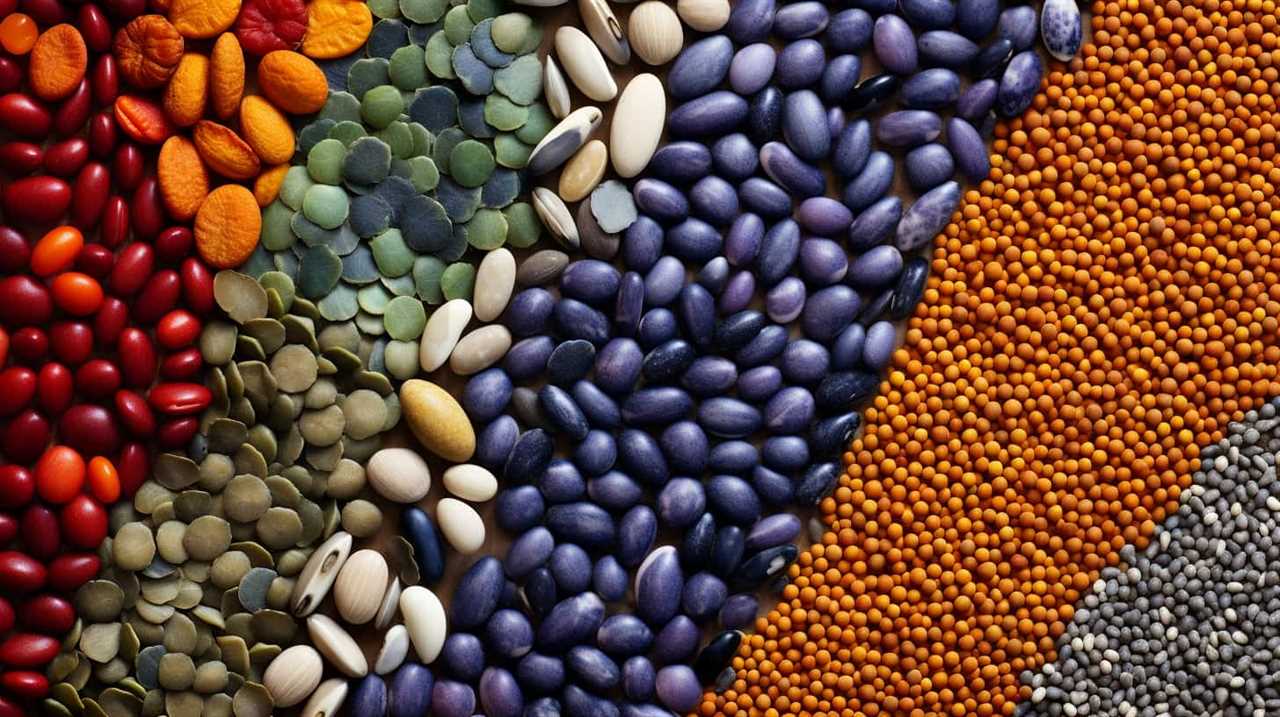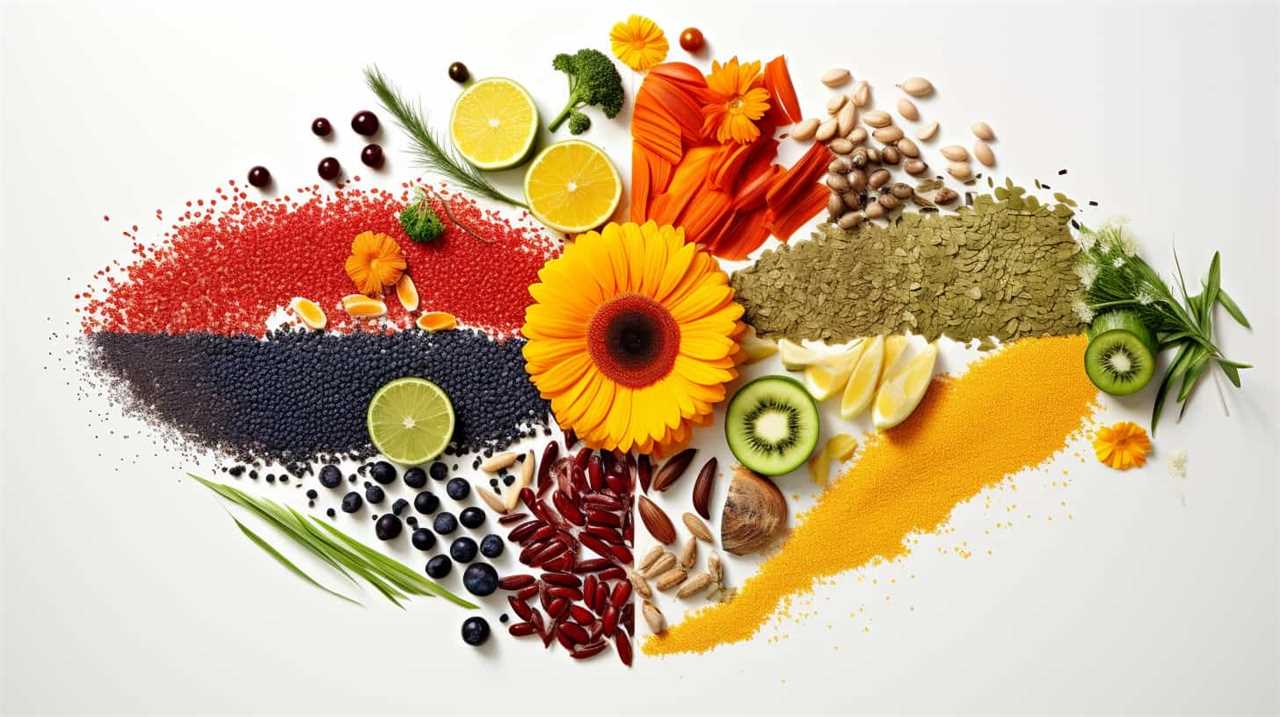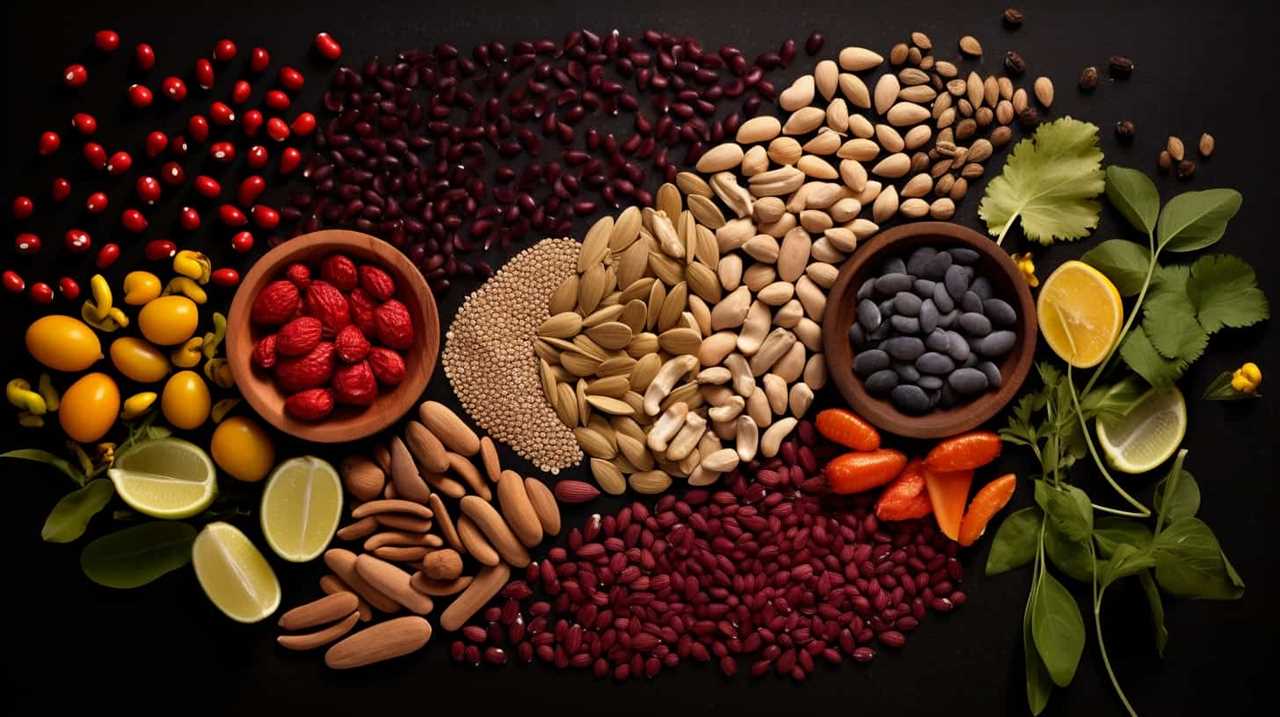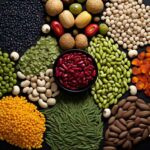I have discovered an innovative method for crafting a delicious and healthy gluten-free vegan diet: using the power of super seeds! These tiny yet powerful seeds like chia have become a key ingredient in boosting the nutritional value of my meals.
From their omega-3 fatty acids to their fiber and protein content, they’re a must-have for anyone seeking a plant-based, allergen-friendly diet.
Join me as I share tips and recipes for incorporating these super seeds into your gluten-free vegan lifestyle.
Let’s embark on a journey of health and liberation together!

Key Takeaways
- Chia seeds are a versatile ingredient that can be incorporated into a gluten-free vegan diet in various ways.
- Chia seeds provide essential nutrients such as omega-3 fatty acids, fiber, and antioxidants, which are beneficial for overall health.
- Chia seeds can be used as an egg substitute in baking, making them suitable for vegan and egg-free diets while adding nutritional benefits to baked goods.
- Chia seed crackers are a great gluten-free and vegan snack option that is rich in fiber and healthy fats.
Health Benefits of Chia Seeds
One of the key health benefits of chia seeds is that they can improve digestion when consumed regularly. Chia seeds are rich in dietary fiber, which is essential for maintaining a healthy digestive system. Fiber helps to promote regular bowel movements, prevent constipation, and support the growth of beneficial gut bacteria.
Additionally, chia seeds can help to reduce inflammation in the digestive tract, which can alleviate symptoms of conditions such as irritable bowel syndrome (IBS). Chia seeds are also a great source of omega-3 fatty acids, which have been shown to reduce inflammation and improve overall gut health.
When combined with other super seeds like flax seeds, chia seeds can be used to create delicious and nutritious chia seed pudding recipes, which aren’t only a tasty treat but also provide a boost of fiber and omega-3s.
Incorporating chia seeds into vegan recipes is a great way to enhance the nutritional value of meals while enjoying their numerous health benefits.

Incorporating Chia Seeds Into Vegan Recipes
To incorporate chia seeds into my vegan recipes, I can explore various creative ways to enhance the nutritional value of my meals while enjoying the numerous health benefits they offer.
One popular option is making chia seed pudding, which isn’t only delicious but also incredibly easy to prepare. Simply mix chia seeds with plant-based milk and sweeten it with a natural sweetener like maple syrup or agave nectar. Let it sit in the fridge overnight, and in the morning, you’ll have a creamy and nutritious pudding ready to enjoy.
Another great way to incorporate chia seeds is by adding them to smoothies. Simply blend your favorite fruits, vegetables, and plant-based milk with a tablespoon of chia seeds for an extra boost of fiber, omega-3 fatty acids, and protein.
Chia Seeds as a Source of Essential Nutrients
While incorporating chia seeds into my vegan recipes, I’ve discovered that they’re a rich source of essential nutrients. These tiny seeds pack a nutritional punch and can be a valuable addition to a plant-based diet.

Here are some key nutrients found in chia seeds:
-
Omega-3 fatty acids: Chia seeds are one of the best plant-based sources of omega-3s, which are essential for brain health and reducing inflammation.
-
Fiber: Just one ounce of chia seeds provides a whopping 10 grams of fiber. This helps promote healthy digestion and can aid in weight management.
-
Protein: Chia seeds are also a great source of plant-based protein, making them an excellent option for vegans and vegetarians.

-
Antioxidants: Chia seeds are rich in antioxidants, which help protect against cell damage and support overall health.
Incorporating chia seeds into your diet can be as simple as adding them to smoothies, oatmeal, or baked goods. With their impressive nutritional value, chia seeds are a versatile and beneficial addition to any plant-based diet.
Chia Seeds as an Egg Substitute in Baking
I use chia seeds as an egg substitute in baking. Chia seeds are a versatile ingredient that can be used to replace eggs in various recipes, making them an excellent choice for those following a vegan or egg-free diet. When mixed with water, chia seeds form a gel-like consistency that mimics the binding properties of eggs. This gel can then be used as a substitute for eggs in recipes such as cakes, cookies, and muffins. Not only does this make baked goods suitable for those with dietary restrictions, but it also adds nutritional benefits. Chia seeds are packed with fiber, omega-3 fatty acids, and antioxidants, which can support weight loss and promote overall health. Additionally, chia seeds can be added to smoothies to boost their nutritional content and create a thicker texture.
| Chia Seeds as an Egg Substitute | Benefits |
|---|---|
| Mimics the binding properties | Suitable for vegan and egg-free diets |
| Adds nutritional benefits | Supports weight loss and overall health |
| Versatile ingredient | Can be used in various recipes |
Tips for Including Chia Seeds in a Gluten-Free Vegan Diet
When incorporating chia seeds into a gluten-free vegan diet, it’s important to consider their versatility and nutritional benefits. Chia seeds can be a great addition to a variety of dishes, adding both texture and a boost of nutrients. Here are some tips for including chia seeds in your diet:

-
Chia Seed Pudding: Mix chia seeds with your favorite plant-based milk and let it sit in the fridge overnight. In the morning, you’ll have a delicious and nutritious pudding that can be topped with fruits, nuts, or seeds.
-
Chia Seed Smoothies: Add a tablespoon of chia seeds to your favorite smoothie recipe. The seeds will thicken the smoothie and provide a good source of fiber and omega-3 fatty acids.
-
Chia Egg Replacement: Mix one tablespoon of chia seeds with three tablespoons of water and let it sit for 15 minutes to form a gel-like consistency. This can be used as an egg substitute in baking recipes.
-
Chia Seed Crackers: Combine chia seeds with other gluten-free flours and spices to make homemade crackers. They make a great snack or accompaniment to dips and spreads.

Frequently Asked Questions
How Do Chia Seeds Contribute to Weight Loss?
Chia seeds can contribute to weight loss as they act as an appetite suppressant, making you feel full for longer. Additionally, they can boost metabolism, aiding in burning calories.
Can Chia Seeds Be Consumed by Individuals With Nut Allergies?
Chia seeds are a great option for individuals with nut allergies, as they do not contain nuts. However, cross-contamination risks should be considered. Chia seeds are also a rich source of omega-3 fatty acids.
Are There Any Potential Side Effects of Consuming Chia Seeds?
I found that there are potential digestive issues associated with consuming chia seeds, such as bloating and gas. Additionally, they may interact with certain medications, so it’s important to consult with a healthcare professional before incorporating them into your diet.
What Is the Recommended Daily Intake of Chia Seeds for Optimal Health Benefits?
The recommended daily intake of chia seeds for optimal health benefits varies, but consuming 1-2 tablespoons is a good starting point. These tiny seeds pack a nutritional punch, providing fiber, protein, omega-3 fatty acids, and more.

Can Chia Seeds Be Used as a Replacement for Dairy Products in Vegan Recipes?
Chia seeds can be a great dairy alternative in vegan recipes. They provide a creamy texture and are packed with nutrients. In vegan baking, chia seeds can be used as a substitute for eggs.
Conclusion
Incorporating chia seeds into a gluten-free vegan diet is a smart move for both health-conscious individuals and those with dietary restrictions. These tiny seeds pack a powerful punch, providing essential nutrients and acting as a versatile egg substitute in baking.
With their numerous health benefits and ability to enhance the flavor and texture of recipes, chia seeds are truly the superhero of the plant-based world.
So, why not sprinkle some super seeds into your meals and reap the rewards?

















